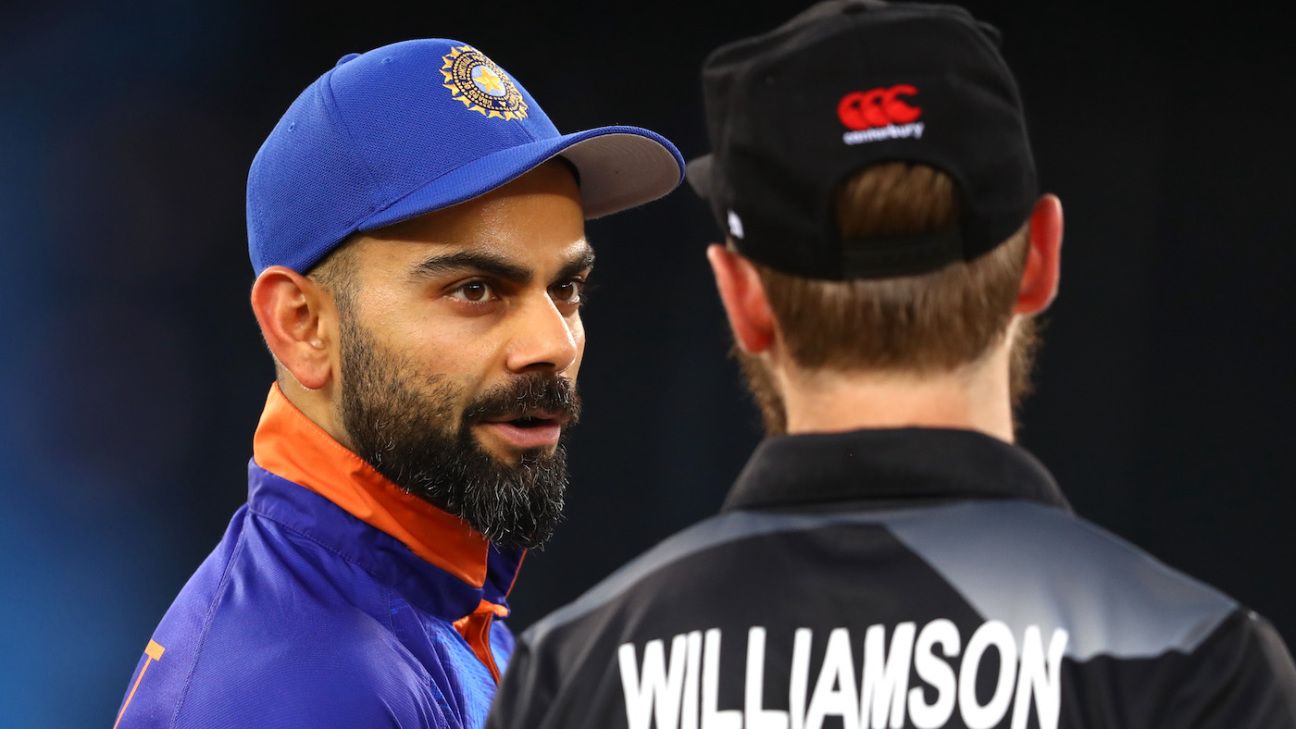The battles for the top positions at the Men’s T20 World Cup have brought NRRs repeatedly into focus. Here’s all you need to know about it
The battle for the top positions in the 2021 Men’s T20 World Cup – both in the qualifiers and the Super 12s – has brought in sharp focus the net run rate (NRR), which is the metric used to separate teams which are level on points. So here is ESPNcricinfo’s explainer on NRR, and how it works in various situations.
What is net run rate and how is it calculated?
NRR is a metric which attempts to reward teams for winning convincingly. In other words, it attempts to quantify “plenty” in a statement like “Team A won with plenty to spare”. It is used in tournaments to separate teams that are on the same number of points, and is calculated by subtracting a team’s bowling run rate (runs conceded/overs bowled) from the batting run rate (runs scored/overs batted).
For example, if a team scored 360 runs in 40 overs, and conceded 280 runs in 40 overs, their NRR would be 2. (Batting run rate = 9 minus bowling run rate = 7)
What happens when a team is bowled out in less than their full allotment of overs?
In that case, for NRR purposes, the team is deemed to have played their full quota of overs. For example, in the Australia vs Bangladesh match on November 4, Bangladesh were bowled out for 73 in 15 overs – a run rate of 4.87 – but for NRR purposes, their batting run rate was 3.65 (73/20).
This is to ensure that teams don’t get rewarded for getting bowled out in fewer overs. Imagine a scenario where team A wants to improve their NRR, without caring for the match result: they could then get bowled out for 60 in five overs; even if team B wins in 10, team A’s NRR for the match would still be twice that team B despite losing the match, if the actual overs played was taken into account. By considering the total overs available in such cases, the metric ensures that the winning team always has a higher NRR for that match than the losing team, which is how it should be.
In the example above, team A’s NRR for the match will be -3.1 (60/20 minus 61/10), while Team B’s NRR will be +3.1.
What happens in games where DLS comes into play?
In DLS-affected games, the par score or the target, as per DLS, is used in the NRR calculations instead of the actual scores. Here are a couple of examples to explain this:
- Team A scores 180 in 20 overs. The game is then reduced to 15 overs, and the revised target for Team B is, say, 150. For NRR purposes, Team A’s total will be 150 in 15. That is to ensure against situations where Team B scores at more than nine an over (team A’s original run rate), but still ends up losing the match because the revised required rate is higher.
- Team A scores 180 in 20 overs. Team B are 87 for 2 in 10 overs when the match is called off. Let’s say the par score for two wickets down is 82. In that case, Team B are winners by five runs, and for NRR purposes, Team A’s score is 82 in 10 overs. That again ensures that the winning team has a higher NRR for that match than the losing team (which wouldn’t be the case if you’d have calculated the NRR on Team’s A final score).
If a team is looking to increase its NRR, does it make sense to bat first or chase?
There is no clear answer here which will work every time. Batting first allows the team to utilise the full quota of overs to improve their run rate, but chasing allows the team to aim at a higher run rate in fewer overs. If a team has already batted 60 overs in a tournament, batting for 20 more overs will impact overall run rate more than batting for just 10 overs, but it is obviously easier to score quickly in a few overs than to maintain it for 20 overs.
Do wickets matter in NRR calculations?
No, wickets lost or taken do not make a difference, which is a drawback of the system. This gets highlighted more in ODIs, where games can be extremely close despite a team winning with plenty of overs to spare, than in T20s, where balls remaining is usually the more scarce resource.
To bring wickets into the mix, one option is to convert all wins into run margins by bringing in the DLS par score at that stage. Since DLS par scores take both resources – balls remaining and wickets in hand – into account, it will reflect more accurately the margin of victory in such cases.
S Rajesh is stats editor of ESPNcricinfo. @rajeshstats
